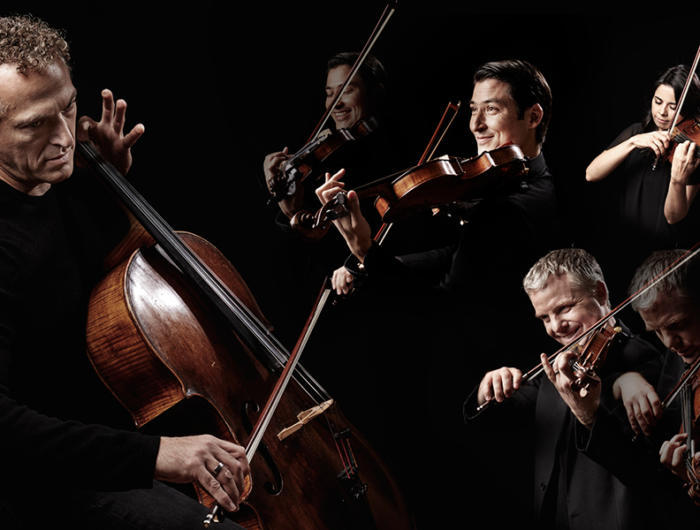The Pacifica Quartet is an American ensemble, formed in 1994, which has enjoyed various residencies including at the University of Chicago and New York’s Metropolitan Museum of Art, as well as producing a number of highly praised recordings. The ensemble has toured Australia before and is here once again, courtesy of Musica Viva, playing two programmws. The first consists of Beethoven’s Quartet Op. 135 (his final quartet), String Quartet No 2 by the Australian composer Nigel Westlake, and Shostakovich’s String Quartet No 3.
 Pacifica Quartet. Photograph © Keith Saunders
Pacifica Quartet. Photograph © Keith Saunders
Despite the 120-year gap between them, the Beethoven and Shostakovich works have a certain amount in common. Both are deeply personal statements by their composers. Both begin by attempting a light touch but find themselves drawn off course, leading to heartbreaking slow movements. Beethoven’s Quartet No 16 seems intent on returning to a Haydn-esque style of classicism, which is then undercut by interruptions, exploratory modulations that are abruptly abandoned, and (in the Vivace movement) a passage of frustrated, relentless rhythmic repetition. The heart of the work is the poignant Lento assai, cantante e tranquillo. Here the Pacifica’s extraordinary precision was used to great expressive purpose. The four musicians were as one in their phrasing, their dynamic gradations––even their breathing. Elsewhere they fully conveyed the work’s sudden contrasts of tone, as Beethoven (by this time completely deaf) struggled against the confines of the musical form.
Dmitri Shostakovich’s Third String Quartet of 1946 came at a bad time, after Stalin’s denunciation of his opera Lady Macbeth of Mtsensk, and just prior to the official criticisms of 1947 that once again put his career as a composer and even his life under threat. Quartet No 3 was the only work Shostakovich wrote in 1946; fortunately, it is a masterpiece. Again, the Pacifica neatly captured the dance-like insouciance of the first movement. However, I did feel towards the end of the movement that they were forcing too much desperation into it; heat at the expense of contrapuntal clarity. The sparse textures of the second movement brought more of their trademark precision, poise, and great subtlety. They hit their stride in the vicious Scherzo––with its pre-echoes of the Symphony No 10. (This movement, with its heavily accented chords, is also eerily reminiscent of Bernard Herrmann’s score for the 1960 Hitchcock film Psycho. Perhaps Herrmann knew this piece?) Their playing of the Adagio, a movement deliberately modeled on the slow movements of Beethoven’s late quartets, was heartfelt. In the fifth and final movement, some foot stamping (from the cellist?) resonated and seemed to add to the hollow victory of the music. It was a towering performance altogether, making it clear why The Pacifica Quartet’s Shostakovich is celebrated.
Nigel Westlake’s String Quartet No 2 (2005), which closed the first half of the concert, is a substantial work lasting about 25 minutes. The players relished its moments of humour, such as the trenchant, almost jazzy cross-rhythms of the first movement, and the whimsicality of the scherzo. They showed their sheer virtuosity in the scurrying scale passages of the finale, all the while maintaining tight ensemble and perfect pitch. Again, the slow movement proved to be the heart of the work, beginning in a manner not unlike the slow movement of Prokofiev’s Second Violin Concerto with a long cantilena from the first violin over a pizzicato accompaniment. The arc of this movement, which gradually builds to a climax and then recedes, was expertly calibrated. As an encore, we heard the pizzicato movement of Bartók’s String Quartet No 4.
This was a solid program to offer. (The Pacifica’s other programme, which includes quartets by Haydn and Mendelssohn, may not be so emotionally draining.) Its success came down to the group’s cohesiveness and single-mindedness as an ensemble as much as the musicians’ individual brilliance as instrumentalists.
The Pacifica Quartet play in Sydney on June 26.











Comments
Log in to join the conversation.